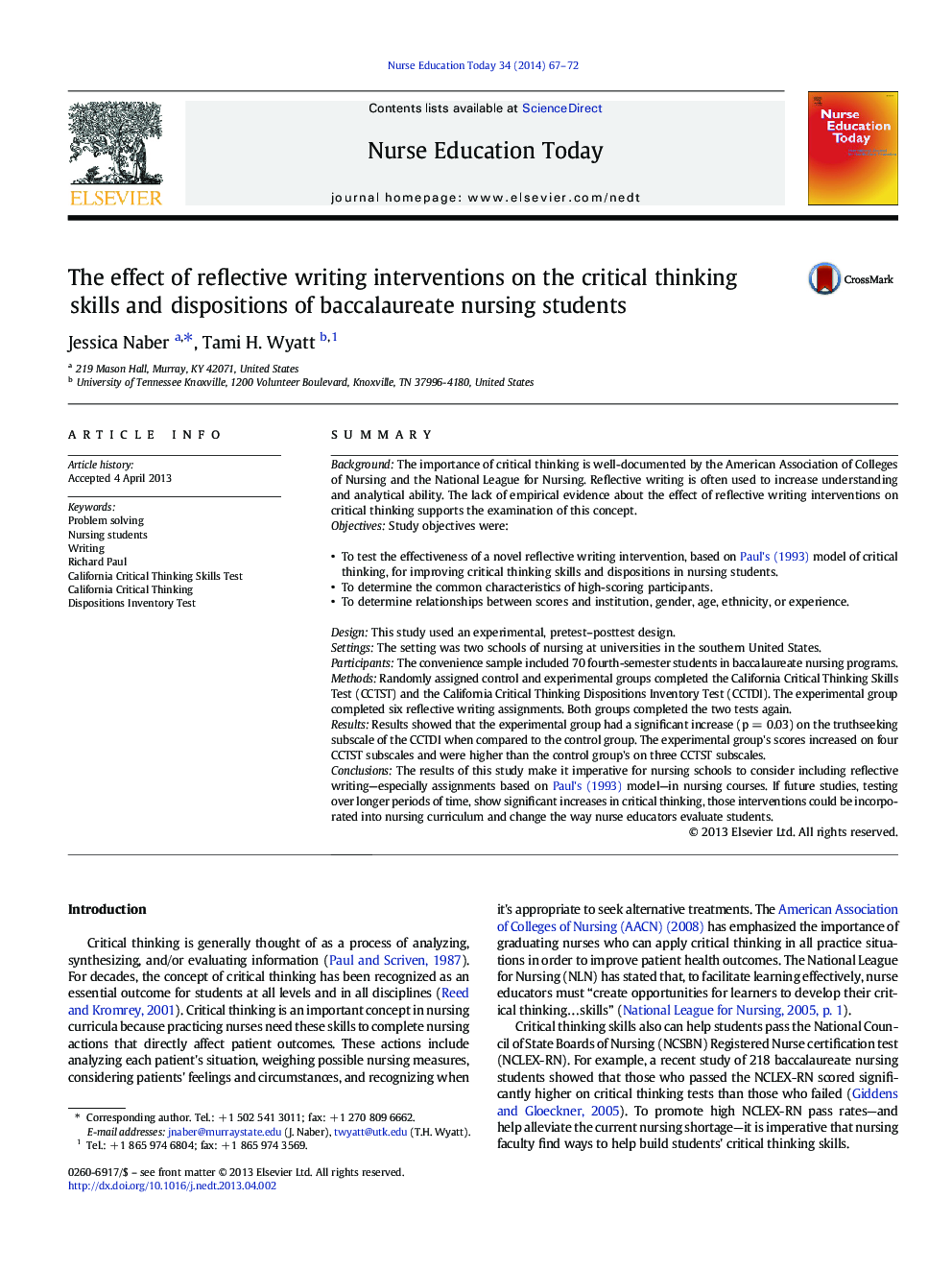| Article ID | Journal | Published Year | Pages | File Type |
|---|---|---|---|---|
| 368387 | Nurse Education Today | 2014 | 6 Pages |
SummaryBackgroundThe importance of critical thinking is well-documented by the American Association of Colleges of Nursing and the National League for Nursing. Reflective writing is often used to increase understanding and analytical ability. The lack of empirical evidence about the effect of reflective writing interventions on critical thinking supports the examination of this concept.ObjectivesStudy objectives were:•To test the effectiveness of a novel reflective writing intervention, based on Paul's (1993) model of critical thinking, for improving critical thinking skills and dispositions in nursing students.•To determine the common characteristics of high-scoring participants.•To determine relationships between scores and institution, gender, age, ethnicity, or experience.DesignThis study used an experimental, pretest–posttest design.SettingsThe setting was two schools of nursing at universities in the southern United States.ParticipantsThe convenience sample included 70 fourth-semester students in baccalaureate nursing programs.MethodsRandomly assigned control and experimental groups completed the California Critical Thinking Skills Test (CCTST) and the California Critical Thinking Dispositions Inventory Test (CCTDI). The experimental group completed six reflective writing assignments. Both groups completed the two tests again.ResultsResults showed that the experimental group had a significant increase (p = 0.03) on the truthseeking subscale of the CCTDI when compared to the control group. The experimental group's scores increased on four CCTST subscales and were higher than the control group's on three CCTST subscales.ConclusionsThe results of this study make it imperative for nursing schools to consider including reflective writing—especially assignments based on Paul's (1993) model—in nursing courses. If future studies, testing over longer periods of time, show significant increases in critical thinking, those interventions could be incorporated into nursing curriculum and change the way nurse educators evaluate students.
